Shenzhou-10: China launches next manned space mission
- Published
Jon Amos on the launch of the Shenzhou-10 mission and what the Chinese are hoping to achieve
China has launched its latest Shenzhou manned space mission.
Three astronauts blasted away from the Jiuquan base in Inner Mongolia on a Long March 2F rocket at 17:38 Beijing time (09:38 GMT).
The commander, Nie Haisheng, and his crew, Zhang Xiaoguang and Wang Yaping, plan to spend just under two weeks at the orbiting Tiangong space lab.
Wang is China's second female astronaut and she will beam the country's first lesson from space to students on Earth.
The crew's capsule was ejected from the upper-stage of the rocket about nine minutes after lift-off. Mission controllers clapped enthusiastically once the ship's solar panels had been deployed.
Earlier in the day, Chinese TV carried pictures of President Xi Jinping wishing the crew luck.
"You have made Chinese people feel proud of ourselves,'' Xi told Nie and his colleagues. "You have trained and prepared yourselves carefully and thoroughly, so I am confident in your completing the mission successfully. "I wish you success and look forward to your triumphant return.''
It should take just over 40 hours to raise the craft's orbit to the operating altitude of Tiangong some 335km (210 miles) above the planet's surface.

Wang Yaping (L), Nie Haisheng (C) and Zhang Xiaoguang (R) took part in the now traditional walkout, waving to well-wishers before boarding the bus to go to the launch pad
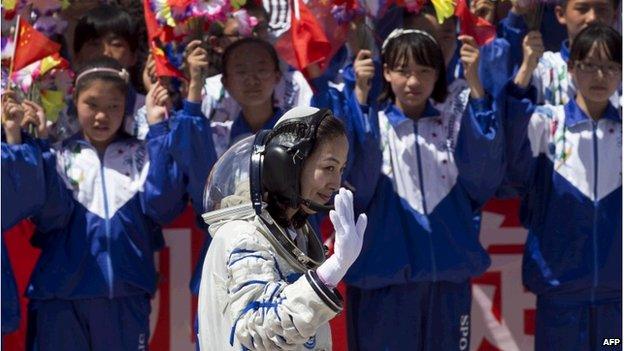
A lot of attention has been focussed on Wang Yaping. She becomes only the second Chinese woman to go into space in the Shenzhou programme. Wang will lecture to students from orbit
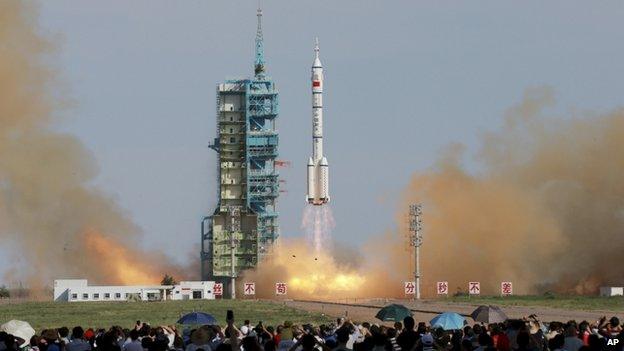
The Long March 2F rocket made a clean getaway from the Jiuquan spaceport, carrying the Shenzhou-10 capsule on a nine-minute ride to orbit. It was the fifth manned launch in the Shenzhou programme
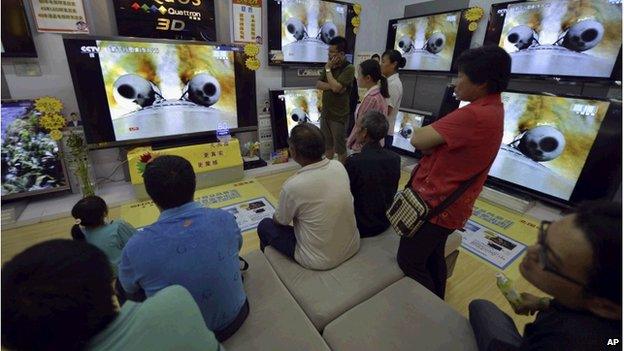
The launch was carried live on TV in China and around the world. These viewers caught the broadcast in an electronics store in Shijiazhuang in Hubei province

The flight of the Long March 2F appeared flawless, the vehicle climbing into the late afternoon sky. The rocket dumped its strap-on boosters and performed its core stage separation right on cue

Chief mission commander Zhang Youxia (C) saluted at mission control and declared the lift-off a success after the capsule's solar panels had been unfurled to provide the capsule with a steady source of power
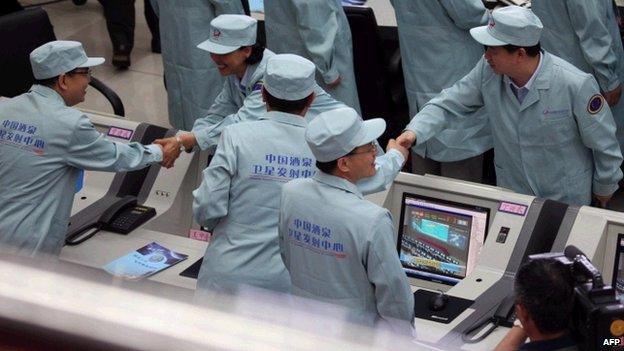
This led to applause and congratulations among the technicians at the Jiuquan space centre. The mission is due to last 15 days. The crew is likely to be back on the ground on 25 June
This mission, the fifth manned venture by China and scheduled to be the longest, is designated Shenzhou-10.
It is the latest step in China's plan to eventually put a permanently manned station above the Earth.
Tiangong-1 is the demonstrator. It was launched in 2011 to provide a target to test rendezvous and docking technologies.
The Shenzhou-9 crew - which , external, Liu Yang - hooked up with the module for nearly 10 days in June 2012.
Nie's team aims to stay a few days longer, and like the crew of Shenzhou-9 will practise both manual and automatic dockings during the mission.
Beijing hopes to launch its fully-fledged station at the turn of the decade.
It is expected to have a mass of about 60 tonnes and comprise a number of interlocking modules.
Like the International Space Station (ISS), it will have long-duration residents and be supplied by robotic freighters.
China's human spaceflight programme is conducted largely in isolation to the ISS partners. But this could change in the next few years.
Europe in particular has opened a dialogue that could eventually result in flight opportunities for its astronauts on the proposed Chinese space station.
"We are looking at possibilities to use this space station," the European Space Agency's human spaceflight director Thomas Reiter told the BBC last month.
"The way ahead is that we will likely see first an exchange of experiments. And there are now also a few colleagues at the European Astronaut Centre who have started Chinese language training."
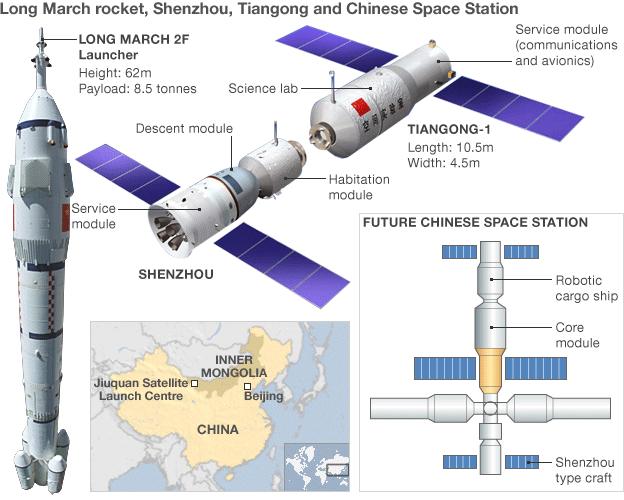
Jonathan.Amos-INTERNET@bbc.co.uk and follow me on Twitter: @BBCAmos, external
- Published29 June 2012
- Published29 June 2012
- Published18 June 2012
- Published16 June 2012
- Published2 November 2011
- Published31 October 2011